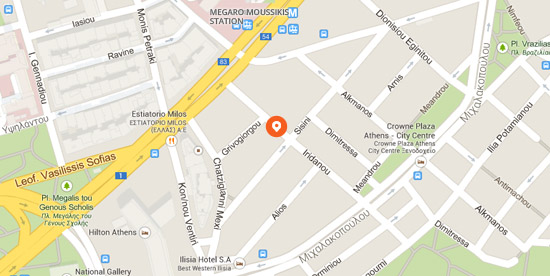Iron Deficiency Anaemia
What is the usefulness of iron for the red cells?
Red cells transfer oxygen from the lungs to the rest of our body, which is used for the proper functioning of our organism. The red cells also contain haemoglobin, a protein rich in iron, that give blood its red colour. It is haemoglobin that allows the transfer of oxygen through the red cells.
How does iron-deficiency anaemia develop?
It develops gradually. Its development begins when iron intake is not enough to meet the organism’s needs in iron. Initially iron deposits are exhausted, but haemoglobin levels in the blood remain within the normal limits, hence there is lack of iron without anaemia. When however iron deposits can no longer meet the everyday needs and haemoglobin levels are lower than normal, then we have iron deficiency and anaemia. Iron-deficiency anaemia may cause fatigue, pale skin, headache, shortage of breath, dizziness, cold extremities, increased probability of inflammation, fragile fingernails, arrhythmia, flutter, etc.
Which are the causes of iron-deficiency anaemia?
The causes are: Insufficient iron intake from food (like during a diet programme to lose weight with few calories, vegetarians or non vegetarians that do not consume enough iron, etc.), reduced ab-sorption of iron (like when using medicines that limit absorption, Crohn’s disease, coeliac disease, etc.), increasing needs in iron without a respective increase in iron intake (pregnancy, babyhood, adolescence, sports, etc.). Blood loss and ailments (severe menstruation, bleeding, surgery, gastric ulcer, polyp at the large intestine, dialysis, etc.) as well as other causes.
How can I find out about iron levels in my system?
Because iron-deficiency develops gradually and indications of iron shortage are not evident up until the last stage, it would be good for groups of the population with a high risk of developing iron-deficiency anaemia to take blood tests regularly.
How we deal with iron-deficiency anaemia?
The decision for the right treatment is taken by your doctor, and is based on the degree of iron shortage or the presence of anaemia. The treatment usually is iron supplements for a specific time period. Iron supplements may have side effects like nausea, vomit, constipation, diarrhoea, dark coloured faeces and stomach ailments. If that happens discuss with your doctor possible changes in your medication in order to minimise the symptoms. Apart from the supplements you will need to make changes to your diet.
What happens if I neglect to follow the treatment?
In this case, symptoms like those described above will emerge. In addition, other health issues will aggravate your condition. For instance, if you suffer from coronary disease, anaemia may cause angina; that is because the heart will be hard pressed to send more blood to the body in order to even the reduced quantity of oxygen transferred by haemoglobin, due to anaemia.
When will I revert back to normal?
When iron-deficiency has reached the last stage (anaemia) complementary iron administration is usually recommended so that the quantities of haemoglobin in the circulation is sufficient and iron deposits are properly replenished. Anaemia cannot be remedied overnight. You will start feeling better after one week of treatment.
Large dose
It is important not to take iron supplements just because you feel fatigue. Consult with your doctor as very large quantities may be especially dangerous, particularly if consumed by children. Therefore keep any supplements you are taking away from them. Also, in rare cases iron-deficiency develops in adult males and females after menopause. So you should bear in mind that fatigue or other symptoms are not exclusively caused by iron deficiency, but by other causes as well.
The important part of nutrition
Nutrition will help you maintain iron levels in your blood circulation as well as keep your iron deposits full. Hence will help you prevent and cure anaemia. Supplements when recommended should be taken but cannot replace a balanced diet.
Iron sources and factors that affect absorption
Iron is absorbed more easily when it is coming from red meat, chicken and fish. While, it is less easily absorbed from sources like artichoke, lentil, beans, dried-up fruit, green leafy vegetables and others. Vitamin C assists in iron absorption and consumption of foods like broccoli, peppers, potatoes, oranges, etc with your meal will also help with iron absorption. In contrast there are many factors that reduce absorption like tea and coffee. You are better off not drinking tea or coffee with your meal or at the time before and after a meal. There are also other factors that affect absorption like for example vegetal fibres, oxalic acid, zinc, calcium, etc. The needs in iron are different for each person and depend upon different factors, like gender, age and others.
Contact a Dietitian
The right combination (e.g. Iron sources and vitamin C etc.) as well as the fact that different foods are good for different people can make a difference. For example: although liver has a high concentration in iron, it also contains big quantities of vitamin A, which during pregnancy, may lead to genetic abnormalities in the foetus. It is important to consult with a registered Dietitian, who can evaluate the “whole” picture of your diet and suggest personalised solutions in order to help you incorporate to your diet foods with high concentration in iron, in an effective and balanced way.







